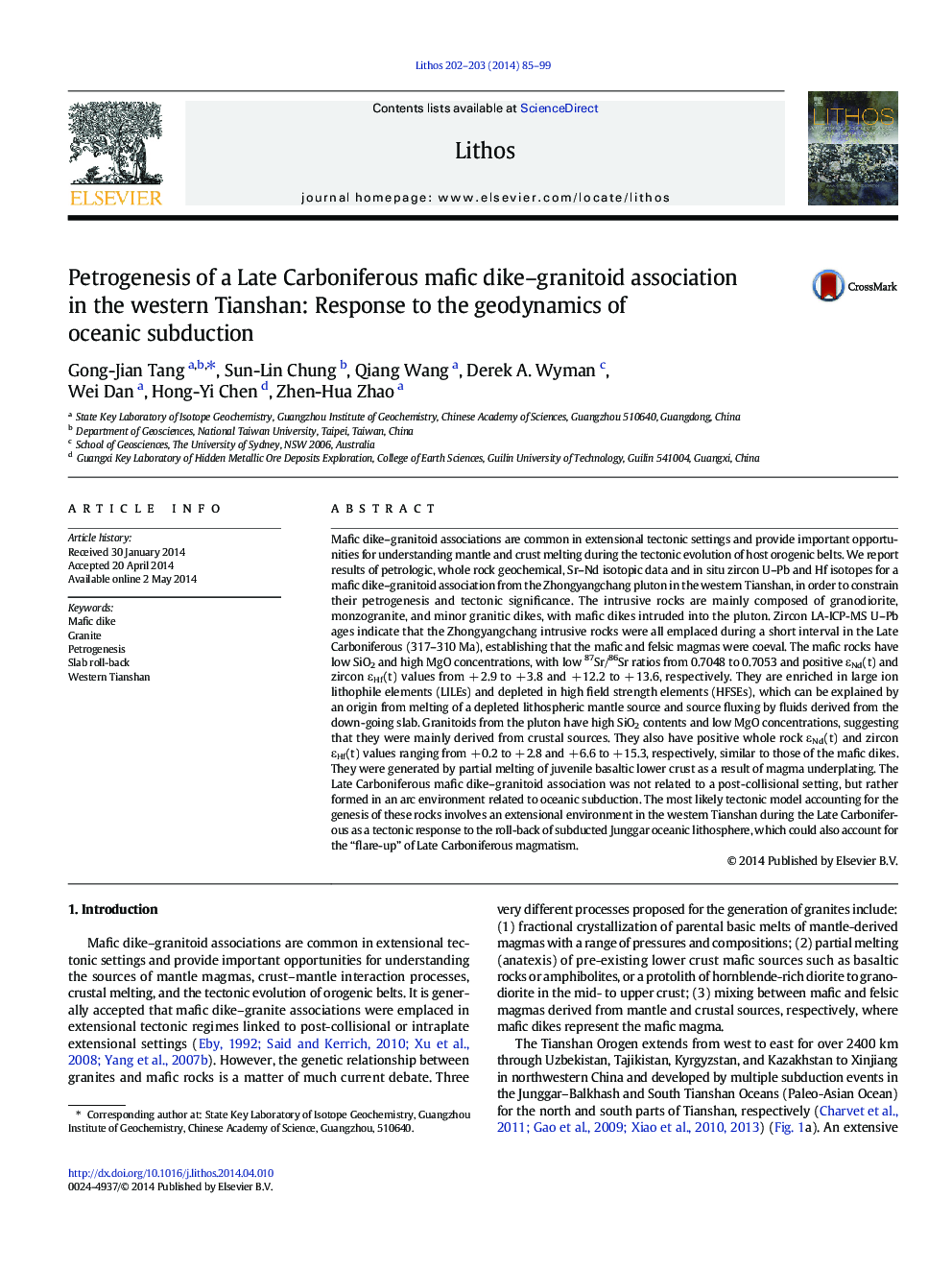| کد مقاله | کد نشریه | سال انتشار | مقاله انگلیسی | نسخه تمام متن |
|---|---|---|---|---|
| 4715874 | 1638675 | 2014 | 15 صفحه PDF | دانلود رایگان |
• A mafic dike–granitoid association, emplaced in the Late Carboniferous (317–310 Ma)
• The mafic dike originated from melting of a depleted metasomatized lithosphere
• The granitoid was generated by melting of juvenile basaltic lower crust.
• Tectonic response to the roll-back of subducted oceanic lithosphere
Mafic dike–granitoid associations are common in extensional tectonic settings and provide important opportunities for understanding mantle and crust melting during the tectonic evolution of host orogenic belts. We report results of petrologic, whole rock geochemical, Sr–Nd isotopic data and in situ zircon U–Pb and Hf isotopes for a mafic dike–granitoid association from the Zhongyangchang pluton in the western Tianshan, in order to constrain their petrogenesis and tectonic significance. The intrusive rocks are mainly composed of granodiorite, monzogranite, and minor granitic dikes, with mafic dikes intruded into the pluton. Zircon LA-ICP-MS U–Pb ages indicate that the Zhongyangchang intrusive rocks were all emplaced during a short interval in the Late Carboniferous (317–310 Ma), establishing that the mafic and felsic magmas were coeval. The mafic rocks have low SiO2 and high MgO concentrations, with low 87Sr/86Sr ratios from 0.7048 to 0.7053 and positive εNd(t) and zircon εHf(t) values from + 2.9 to + 3.8 and + 12.2 to + 13.6, respectively. They are enriched in large ion lithophile elements (LILEs) and depleted in high field strength elements (HFSEs), which can be explained by an origin from melting of a depleted lithospheric mantle source and source fluxing by fluids derived from the down-going slab. Granitoids from the pluton have high SiO2 contents and low MgO concentrations, suggesting that they were mainly derived from crustal sources. They also have positive whole rock εNd(t) and zircon εHf(t) values ranging from + 0.2 to + 2.8 and + 6.6 to + 15.3, respectively, similar to those of the mafic dikes. They were generated by partial melting of juvenile basaltic lower crust as a result of magma underplating. The Late Carboniferous mafic dike–granitoid association was not related to a post-collisional setting, but rather formed in an arc environment related to oceanic subduction. The most likely tectonic model accounting for the genesis of these rocks involves an extensional environment in the western Tianshan during the Late Carboniferous as a tectonic response to the roll-back of subducted Junggar oceanic lithosphere, which could also account for the “flare-up” of Late Carboniferous magmatism.
Journal: Lithos - Volumes 202–203, August 2014, Pages 85–99
